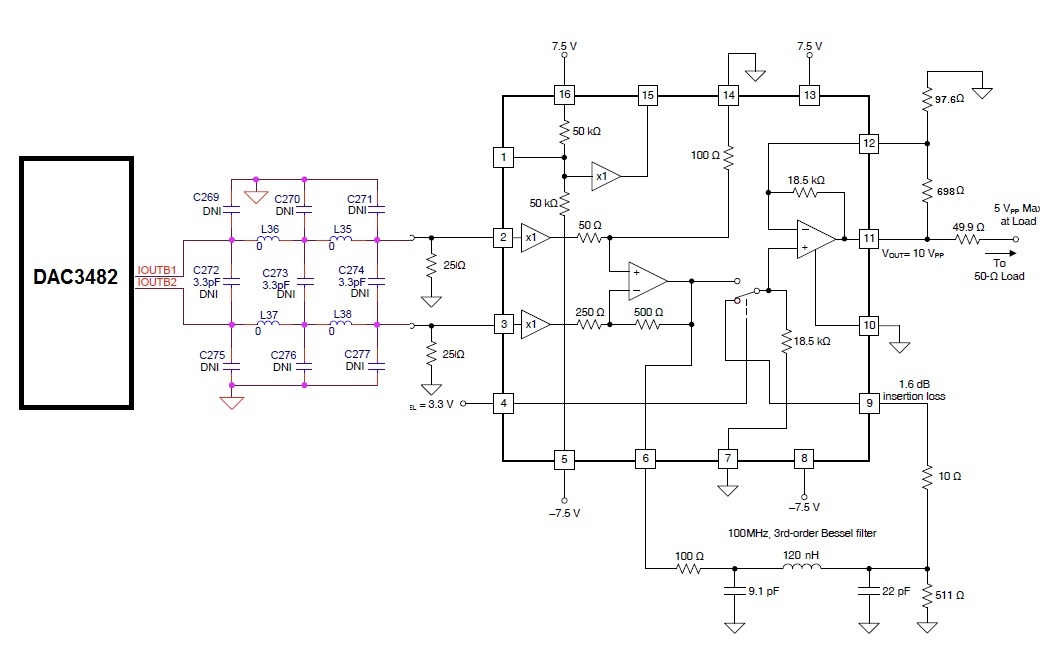Other Parts Discussed in Thread: ADS4249, TIDA-00684, THS3217, DAC3484, DAC38J84, , DAC3484EVM
I got a high speed data stream (coming from ADS4249) where the data is in 2's complement.
I need to do a DC coupled output, DC-100 MHz. Output voltage range should be +/-4V with 50 Ohms termination (i.e. when it is 50 Ohms terminated, the signal on the 50 Ohms termination resistor would be +/-2V).
Can you suggest a DC coupled amplifier which can handle that + a diagram?
I intend to do DC and gain calibrations so minor DC offsets or small gain errors would not be a problem.




